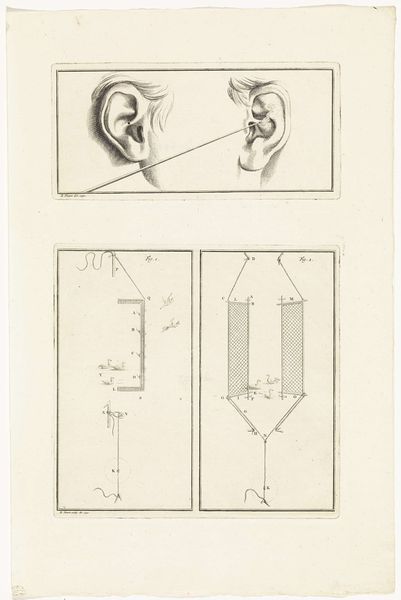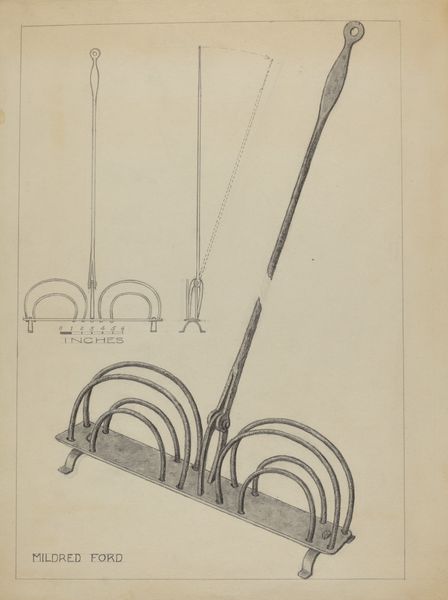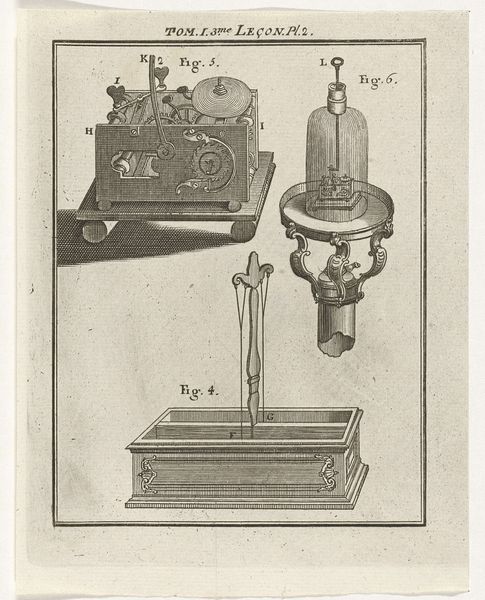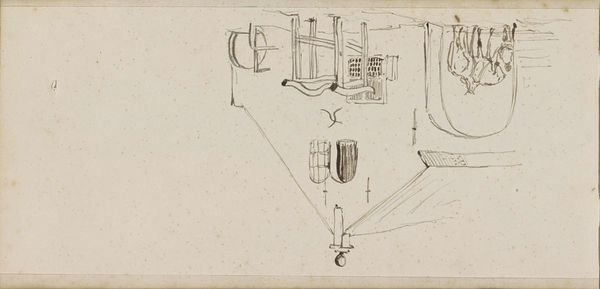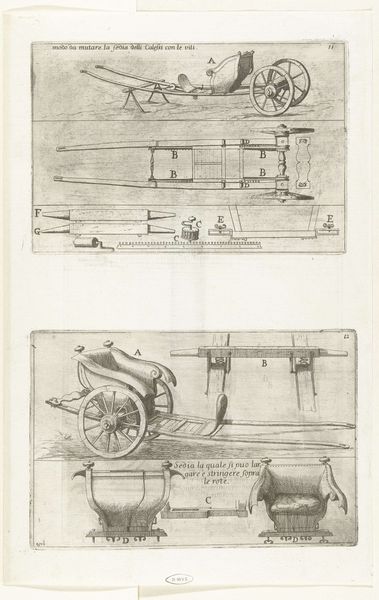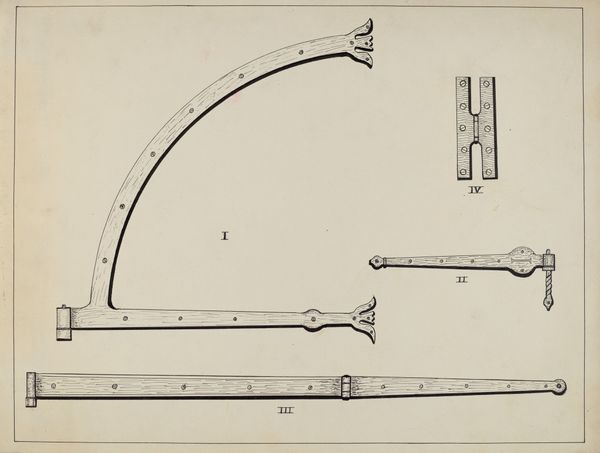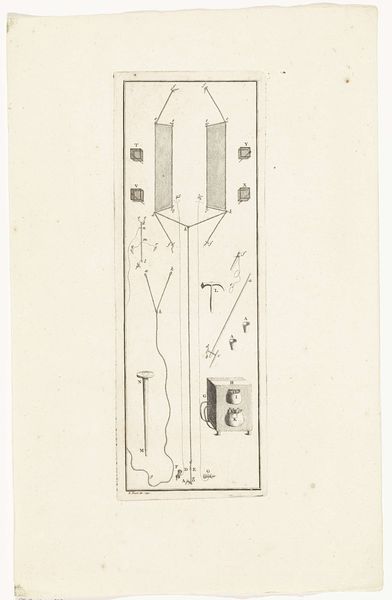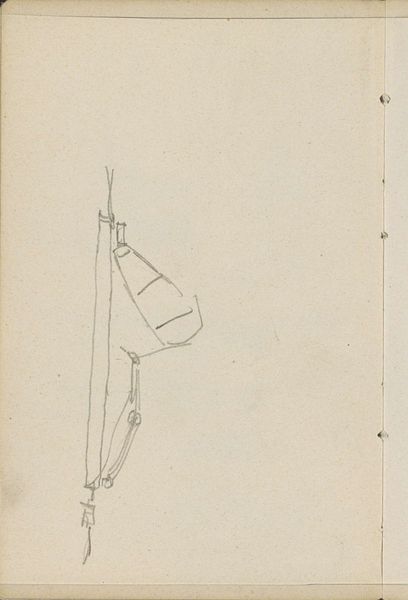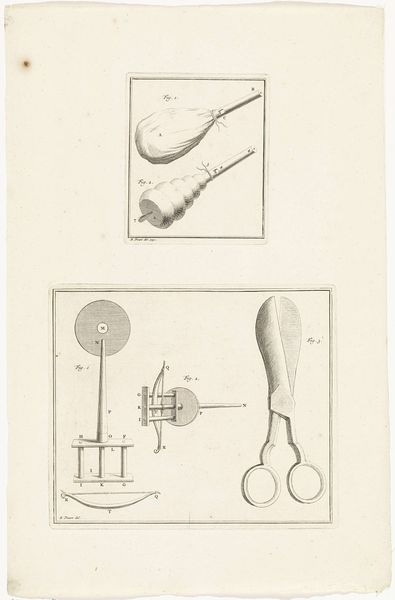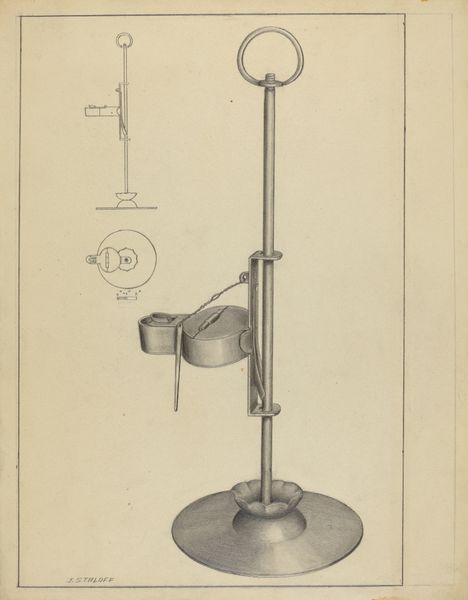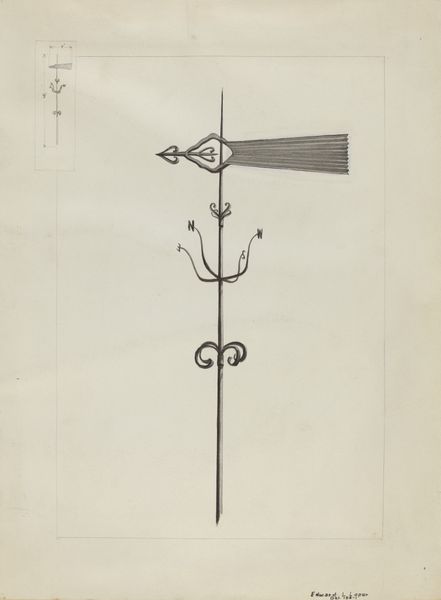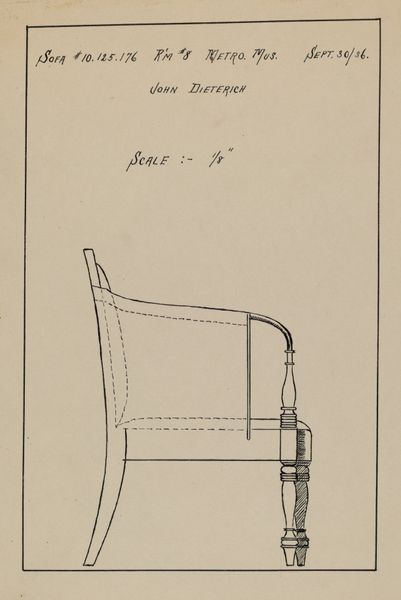
drawing, print, engraving
#
drawing
#
neoclacissism
#
aged paper
#
light pencil work
#
quirky sketch
# print
#
sketch book
#
form
#
personal sketchbook
#
idea generation sketch
#
sketchwork
#
geometric
#
line
#
sketchbook drawing
#
history-painting
#
storyboard and sketchbook work
#
academic-art
#
engraving
#
initial sketch
Dimensions: height 178 mm, width 111 mm
Copyright: Rijks Museum: Open Domain
Editor: This is “Lichamelijke oefeningen; apparaten en aanwijzingen,” or “Physical Exercises; Devices and Instructions,” a print by Daniël (I) Veelwaard from 1806. It's a very technical-looking diagram. I find the detailed lines quite intriguing, like something out of a scientific journal, but it’s also oddly beautiful. How do you interpret this work? Curator: This print speaks volumes about the era’s fascination with Enlightenment ideals and the body. We see the convergence of scientific inquiry, pedagogical ambition, and even social control through physical improvement. What was the role of exercise and physical fitness during this period? Editor: That's an interesting point. I hadn't considered the element of control. I suppose physical fitness could have been tied to social expectations. Curator: Absolutely. Consider how Neoclassicism, the artistic movement prevalent at the time, idealized the human form, drawing inspiration from classical antiquity. It’s also important to think about the rise of public institutions, including schools and military academies. Do you see how diagrams like this one might reflect those shifts in society? Editor: Yes, the clarity of the diagrams and the emphasis on precision suggest a desire to standardize training methods. Were these diagrams intended for a broad audience? Curator: Potentially yes. They certainly could reflect broader cultural ideas about progress and the perfectibility of humanity. It shows an urge to quantify and dissect, making it universally accessible through visual means. So what do we think about the idea of standardization of the human form, through images? Editor: Well, it's slightly unnerving to see physical activity presented so clinically. It definitely sheds light on the period’s values and concerns. Thank you for pointing that out. Curator: And for me, I found new things to consider looking at it from a contemporary lens and thinking about standardizing beauty.
Comments
No comments
Be the first to comment and join the conversation on the ultimate creative platform.
